
Transhumance is a type of pastoralism or nomadism, a seasonal movement of livestock between fixed summer and winter pastures. In montane regions, it implies movement between higher pastures in summer and lower valleys in winter. Herders have a permanent home, typically in valleys. Generally only the herds travel, with a certain number of people necessary to tend them, while the main population stays at the base. In contrast, horizontal transhumance is more susceptible to being disrupted by climatic, economic, or political change.

A herder is a pastoral worker responsible for the care and management of a herd or flock of domestic animals, usually on open pasture. It is particularly associated with nomadic or transhumant management of stock, or with common land grazing. The work is often done either on foot or mounted.

In agriculture, grazing is a method of animal husbandry whereby domestic livestock are allowed outdoors to free range and consume wild vegetations in order to convert the otherwise indigestible cellulose within grass and other forages into meat, milk, wool and other animal products, often on land that is unsuitable for arable farming.
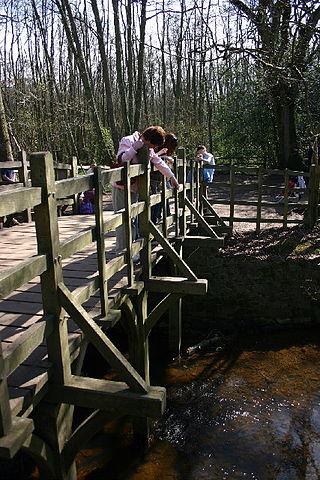
Common land is collective land in which all persons have certain common rights, such as to allow their livestock to graze upon it, to collect wood, or to cut turf for fuel.
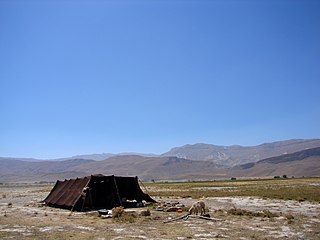
Pastoralism is a form of animal husbandry where domesticated animals are released onto large vegetated outdoor lands (pastures) for grazing, historically by nomadic people who moved around with their herds. The animal species involved include cattle, camels, goats, yaks, llamas, reindeer, horses, and sheep.
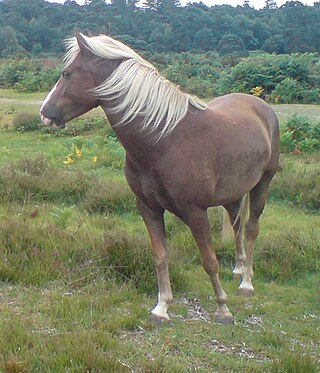
The New Forest pony is one of the recognised mountain and moorland or native pony breeds of the British Isles. Height varies from around 12 to 14.2 hands ; ponies of all heights should be strong, workmanlike, and of a good riding type. They are valued for hardiness, strength, and sure-footedness.
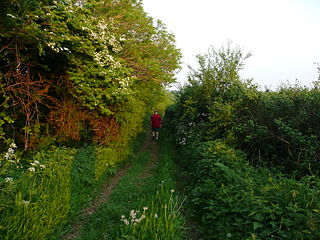
A drovers' road, drove road, droveway, or simply a drove, is a route for droving livestock on foot from one place to another, such as to market or between summer and winter pasture. Many drovers' roads were ancient routes of unknown age; others are known to date back to medieval or more recent times.
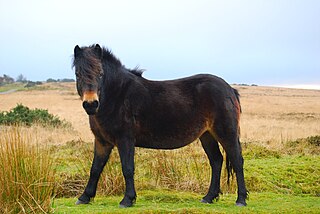
The Exmoor Pony is a British breed of pony or small horse. It is one of the mountain and moorland pony breeds native to the British Isles, and so falls within the larger Celtic group of European ponies. It originates on, and is named for, the Exmoor area of moorland in north-eastern Devon and western Somerset, in south-west England, and is well adapted to the climate conditions and poor grazing of the moor. Some still live there in a near-feral state, but most are in private ownership.
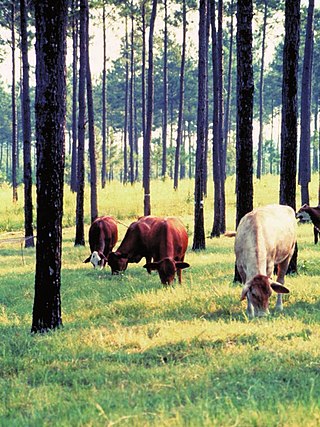
Silvopasture is the practice of integrating trees, forage, and the grazing of domesticated animals in a mutually beneficial way. It utilizes the principles of managed grazing, and it is one of several distinct forms of agroforestry.

Droving is the practice of walking livestock over long distances. It is a type of herding. Droving stock to market—usually on foot and often with the aid of dogs—has a very long history in the Old World. An owner might entrust an agent to deliver stock to market and bring back the proceeds. There has been droving since people in cities found it necessary to source food from distant supplies.

A feral horse is a free-roaming horse of domesticated stock. As such, a feral horse is not a wild animal in the sense of an animal without domesticated ancestors. However, some populations of feral horses are managed as wildlife, and these horses often are popularly called "wild" horses. Feral horses are descended from domestic horses that strayed, escaped, or were deliberately released into the wild and remained to survive and reproduce there. Away from humans, over time, these animals' patterns of behavior revert to behavior more closely resembling that of wild horses. Some horses that live in a feral state but may be occasionally handled or managed by humans, particularly if privately owned, are referred to as "semi-feral".
A remuda is a horse herd from which ranch-hands select their mounts. The word is of Spanish derivation, meaning 'remount', i.e.: "change of horses", and is in common use in the American West.
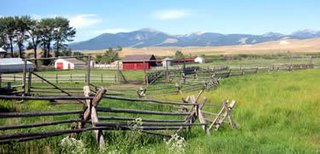
A ranch is an area of land, including various structures, given primarily to ranching, the practice of raising grazing livestock such as cattle and sheep. It is a subtype of farm. These terms are most often applied to livestock-raising operations in Mexico, the Western United States and Western Canada, though there are ranches in other areas. People who own or operate a ranch are called ranchers, cattlemen, or stockgrowers. Ranching is also a method used to raise less common livestock such as horses, elk, American bison, ostrich, emu, and alpaca.

Management of free-roaming feral and semi-feral horses, on various public or tribal lands in North America is accomplished under the authority of law, either by the government of jurisdiction or efforts of private groups. In western Canada, management is a provincial matter, with several associations and societies helping to manage wild horses in British Columbia and Alberta. In Nova Scotia, and various locations in the United States, management is under the jurisdiction of various federal agencies. The largest population of free-roaming horses is found in the Western United States. Here, most of them are protected under the Wild and Free-Roaming Horses and Burros Act of 1971 (WFRH&BA), and their management is primarily undertaken by the Bureau of Land Management (BLM), but also by the U. S. Forest Service (USFS)
A herdshare is a contractual arrangement between a farmer and an owner of livestock - the shareholder or member - through which the shareholder is able to obtain raw milk, meat, offal and other profits of the livestock proportionate to the shareholder's interest in the herd. Herdshares include cowshares, goatshares, and sheepshares, and are sometime referred to as "farmshares" or "dairy-shares," although the term "farmshare" can also refer to an entire farm held in joint ownership.

The Vaynol is one of the United Kingdom's rarest breeds of cattle with less than 150 breeding animals registered. The breed is currently listed as “critical” on the Rare Breed Survival Trust list. There are currently three officially registered herds of Vaynol cattle existing in the United Kingdom. Together with the Chillingham and White Park cattle, the Vaynol is one of three horned breeds derived from ancient white parkland herds from Britain and Ireland. These park cattle were also the basis of a similar fourth breed, the polled British White.

Agriculture in Wales has in the past been a major part of the economy of Wales, a largely rural country which is part of the United Kingdom. Wales is mountainous and has a mild, wet climate. This results in only a small proportion of the land area being suitable for arable cropping, but grass for the grazing of livestock is present in abundance. As a proportion of the national economy, agriculture is now much less important; a high proportion of the population now live in the towns and cities in the south of the country and tourism has become an important form of income in the countryside and on the coast. Arable cropping is limited to the flatter parts and elsewhere dairying and livestock farming predominate.
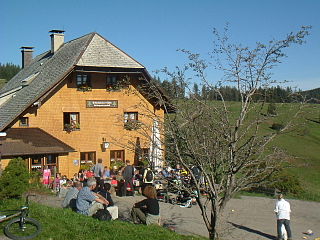
The Erlenbacher Hut is an inn and cattle hut (Almhütte) on the Erlenbach stream in the Black Forest in Germany.
In the New Forest, an agister (/ˈadʒɪstə/) is a local official whose role is to assist the verderers with their duty to manage the free-roaming animals that the New Forest commoners are allowed to release onto the forest. Several thousand semi-wild ponies run free, along with several thousand cattle and smaller numbers of donkeys, sheep and pigs. These are owned by the commoners who pay an annual grazing fee known as the ‘marking fee’. There are currently five New Forest agisters employed by the Court of Verderers, each with responsibility for a specific forest area.
A New Forest commoner is a person who has recognized historical rights associated with the New Forest area of Southern England. The term is used both for a practitioner of the heritage agricultural vocation of commoning, and also a cultural minority native to the area. They are closely associated with the New Forest pony. In 2020, there were about 700 New Forest commoners.
















